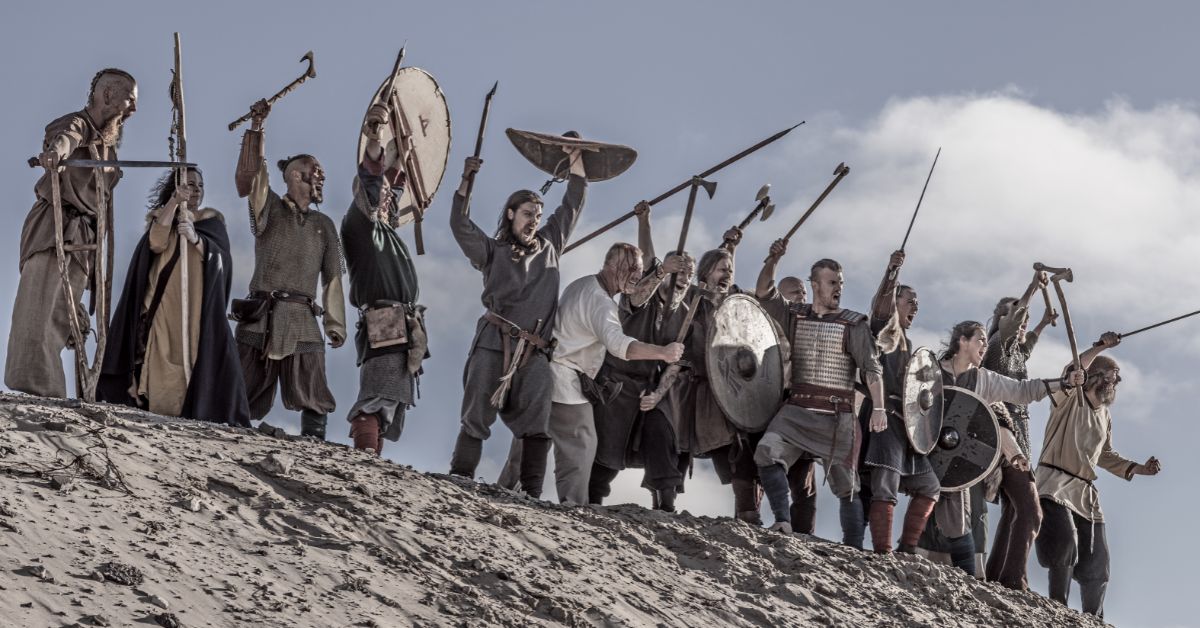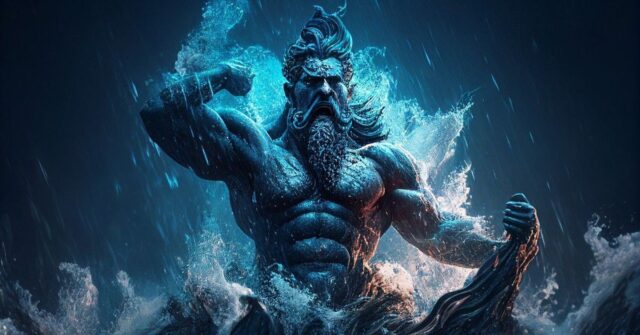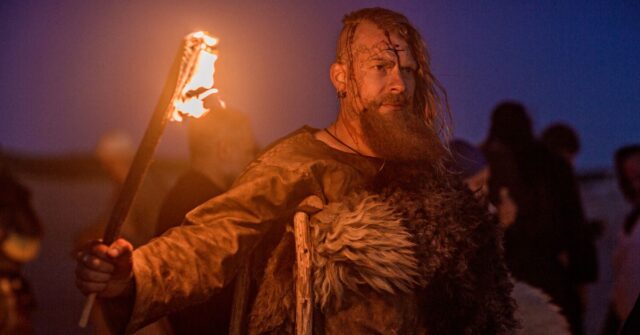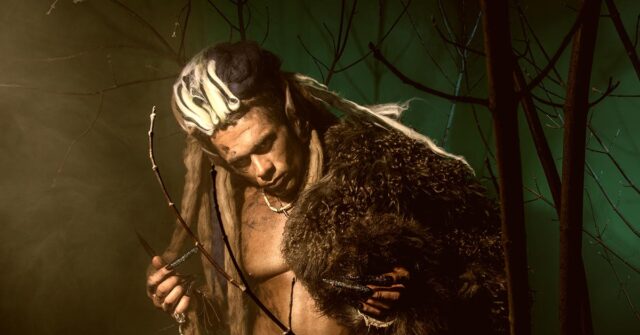The Viking Age, a period stretching roughly from the late 8th to the early 11th century, was marked by the seafaring Norse people’s far-reaching influence and dramatic exploits.
This blog post delves into the lives and legacies of the most famous Viking leaders, whose feats of exploration, warfare, and statecraft have captured the imagination of generations.
The Advent of Viking Age: Contextualizing the Era
The Viking Age heralded the rise of a new force in medieval Europe.
Originating from what is now Denmark, Norway, and Sweden, these Norse warriors, traders, and explorers embarked on expeditions that would leave a lasting impact on the world stage.
Understanding the societal and cultural backdrop of Scandinavia during this era is essential to appreciate the exploits of its leaders.
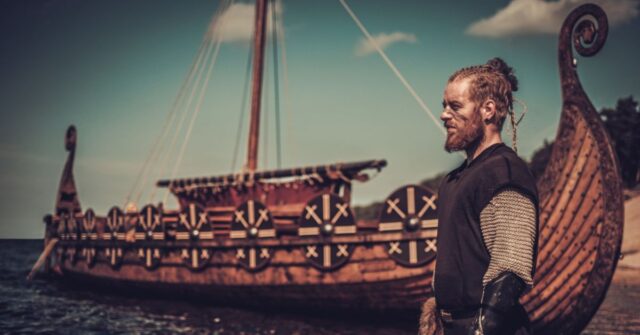
The Rise of Norse Seafarers
Norse seafarers’ mastery of shipbuilding and navigation propelled them across the known world.
With their longships, they traversed treacherous seas to raid, trade, and settle, from the coasts of North America to the rivers of Eastern Europe.
Understanding Viking Culture and Society
Viking society was complex and multifaceted, featuring a rigid class system, a rich pantheon of gods, and a legal system that included assemblies known as things.
At the heart of their culture was a warrior ethos that valued honor, bravery, and feasting sagas that immortalized their deeds.
Legendary Figures of the North: A Pantheon of Leaders
Several legendary figures emerged throughout the Viking Age, their names and tales preserved through sagas and in the historical record.
Some, like Ragnar Lothbrok, toe the line between myth and history, while others, like Harald Hardrada, are well-documented by contemporary sources.
Ragnar Lothbrok: The Saga and the Reality
Ragnar Lothbrok, a legendary Norse hero, is as much myth as he is history.
Said to be a scourge upon England and France, his sagas depict a man of extraordinary prowess, though the historical accuracy of these accounts is debated among scholars.
Eric Bloodaxe: The Last King of Norway
Eric Bloodaxe is known to history as a fearsome warrior and the last independent King of Norway.
His rule was marked by strife and conflict, as he fought to maintain his power in the face of growing opposition both at home and abroad.
Harald Hardrada: The Warrior King
Harald Hardrada, whose name means “hard ruler,” lived up to his epithet as a formidable commander and king.
His campaigns extended from the Mediterranean to the cold North, and his ambition ultimately led him to an ill-fated invasion of England in 1066.
Explorers of the Unknown: Voyages and Discoveries
The Vikings were not only fierce warriors but also intrepid explorers.
Their voyages across the seas brought them to far-flung lands, where they established trade routes, colonies, and even briefly settled in North America.
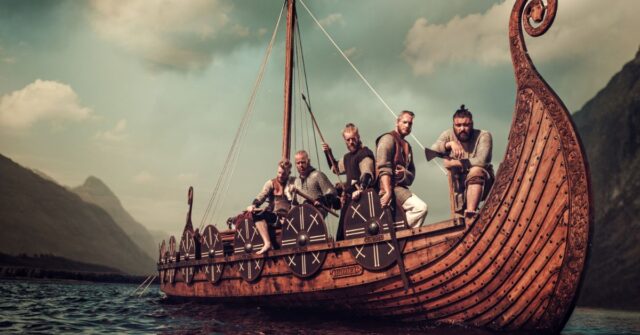
Leif Erikson: The Voyager to Vinland
Leif Erikson stands out as the most famous Viking explorer, known for being among the first Europeans to set foot on North American soil, in a place he called Vinland, around the year 1000 AD.
His voyages expanded the Vikings’ world, challenging future generations to daring explorations.
Bjorn Ironside: Mediterranean Raids
Bjorn Ironside, reputed to be a son of Ragnar Lothbrok, etched his name in history with his ambitious raids into the Mediterranean.
His legendary journey through Gibraltar and into the heart of the then Muslim world showcased the far-reaching capabilities of Viking seafarers.
Masters of War: Strategies and Battles
Vikings were renowned for their innovative military strategies and tactics, which included the famous shield wall formation.
They adapted quickly to different terrains and situations, making them formidable opponents on any battlefield.
The Military Tactics of the Vikings
The Vikings employed a variety of battlefield tactics, from the use of surprise in their raids to the disciplined formations in open battle.
Their success in warfare was partly due to their ability to strike fear into the hearts of their enemies with their fierce reputation and swift longships.
Notable Viking Battles and Sieges
From the Siege of Paris in 845 AD to the Battle of Stamford Bridge in 1066, Viking battles were pivotal in shaping the political landscape of medieval Europe.
These conflicts were not only brutal tests of strength but also of cunning and strategy.
Myths and Religion: The Spiritual Leaders
The Norse belief system, with its pantheon of gods and rituals, played a central role in Viking daily life and their understanding of the world.
Spiritual leaders, such as the seeresses and priests, held significant sway in their communities.

The Role of Norse Gods in Viking Leadership
The Viking leaders often claimed descent from the gods, which bolstered their authority and legitimacy.
Figures like Odin and Thor were not only worshiped but also emulated by these leaders, who sought to mirror their divine might and wisdom.
Seers and Shamanism: Guidance in Norse Life
Seers, known for their prophetic abilities, and shamans, with their rituals, were integral to Norse society.
They provided counsel to Viking leaders, ensuring that the spiritual realm supported their earthly ambitions and decisions.
Settlements and Kingdoms: The Legacy of Viking Rule
As the Viking Age progressed, Norse leaders established settlements that grew into thriving communities and even kingdoms, leaving a legacy that can still be seen in modern-day cultures and political boundaries.
From Raiders to Rulers: The Establishment of Danelaw
Over time, Vikings transitioned from raiders to rulers, particularly in England where they established the Danelaw.
This region operated under Norse laws and customs, forever changing the cultural landscape of the British Isles.
The Impact of Viking Settlements in France: Normandy
In France, Norse settlers were granted land and established what would become Normandy.
The blending of Viking and Frankish cultures there would eventually give rise to the Normans, who played a crucial role in European history.
The Art of Skaldic Poetry: Chronicles of the Leaders
Skaldic poetry, composed by the Skalds, was an art form used to document the lives and deeds of Viking leaders. These poems have been invaluable to historians in understanding the Viking world.

Understanding Skaldic Poetry
Skaldic poetry, characterized by its complex metaphors and specific meters, was a sophisticated form of oral literature that celebrated the feats of Viking chieftains and kings, often recited in halls and at feasts.
Legendary Sagas: The Oral Histories of Viking Leaders
The sagas, prose narratives about the history of ancient Norse and Germanic history, provide a rich source of information about Viking leaders.
They blend fact and fiction, giving us a glimpse into the Viking worldview and their leaders’ exploits.
The Fall and Influence: The End of the Viking Age
The end of the Viking Age is marked by various events that culminated in the decline of Norse power.
Yet, the influence of the Vikings remains evident in many aspects of modern culture, from literature to television series.
The Battle of Stamford Bridge: A Turning Point
The Battle of Stamford Bridge in 1066 is often cited as the end of the Viking Age, where Harald Hardrada’s defeat signaled the decline of Viking dominance in Europe.
The Viking Legacy in Modern Culture
The fascination with Viking culture and history continues to thrive in modern times, influencing everything from popular media to historical research, underscoring the enduring legacy of the Viking leaders.
Unearthing the Past: Archaeological Discoveries
Archaeology has played a pivotal role in uncovering the truths behind Viking legends, revealing details about their society, economy, and the lives of their leaders through the excavation of burial sites, settlements, and artifacts.

Ship Burials and Hoards: Glimpses into Leadership
The discovery of ship burials and hoards offers a direct connection to the Viking leaders of the past, their wealth, and their beliefs in the afterlife.
These findings have shed light on the opulence and power that some leaders wielded.
Recent Archaeological Findings and What They Tell Us
Recent archaeological findings continue to reshape our understanding of the Viking world. From new rune stones to buried fortresses, each discovery adds another piece to the puzzle of the Viking Age.
Conclusion: The Eternal Allure of Viking Leaders
The stories of Viking leaders continue to captivate us because they embody the human spirit’s unyielding drive for exploration, conquest, and legacy.
Their history is a testament to the complexity and depth of human ambition.
Why Viking Leaders Continue to Fascinate
The Viking leaders fascinate us because of their multifaceted natures: they were explorers, warriors, settlers, and rulers.
Their ability to adapt and thrive in different environments makes their stories universally appealing.
Reflecting on the Historical Impact of Viking Exploits
The historical impact of Viking exploits is immeasurable. From altering the course of nations to influencing modern culture, the legacy of Viking leaders is as enduring as it is profound.

